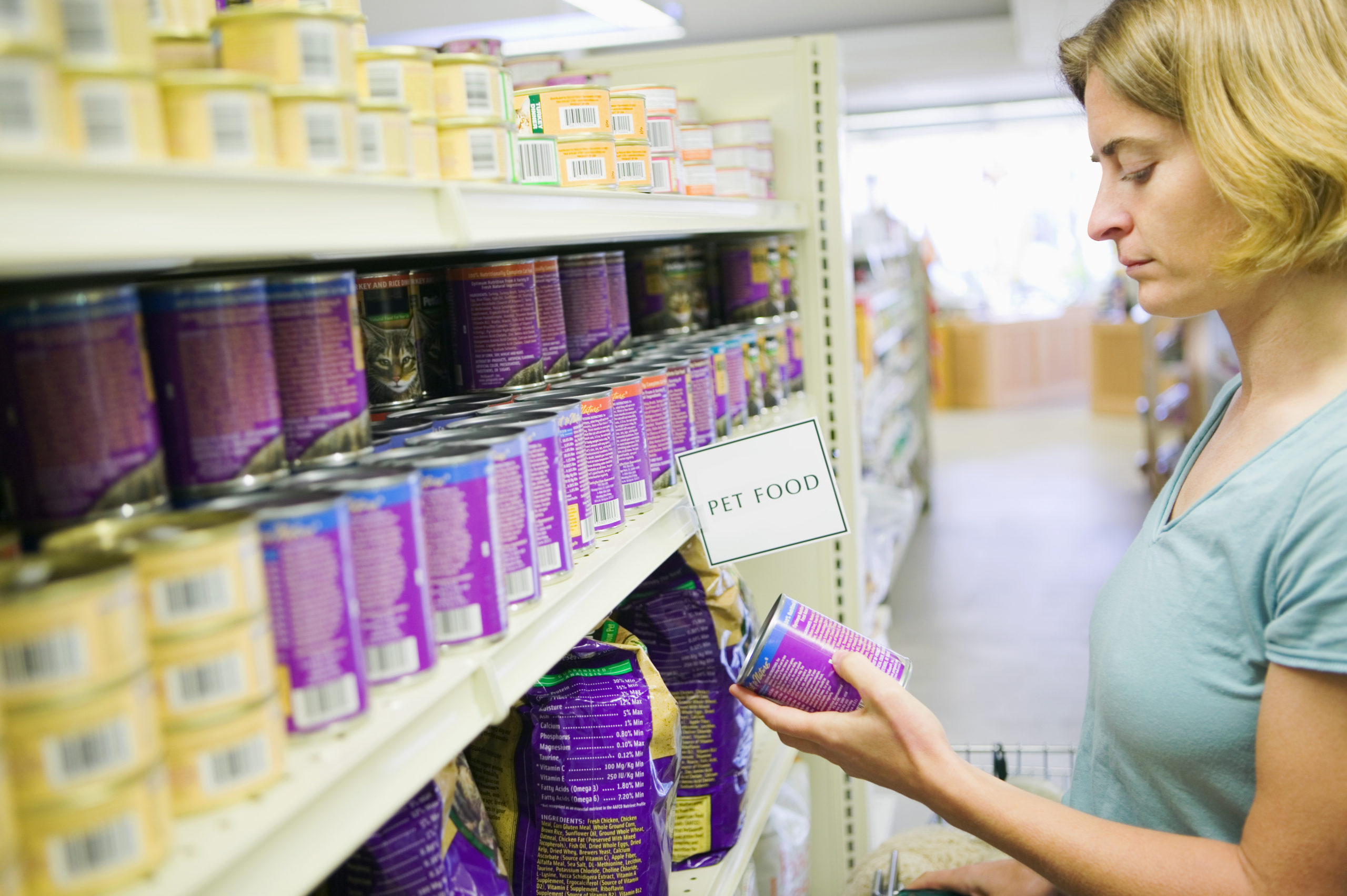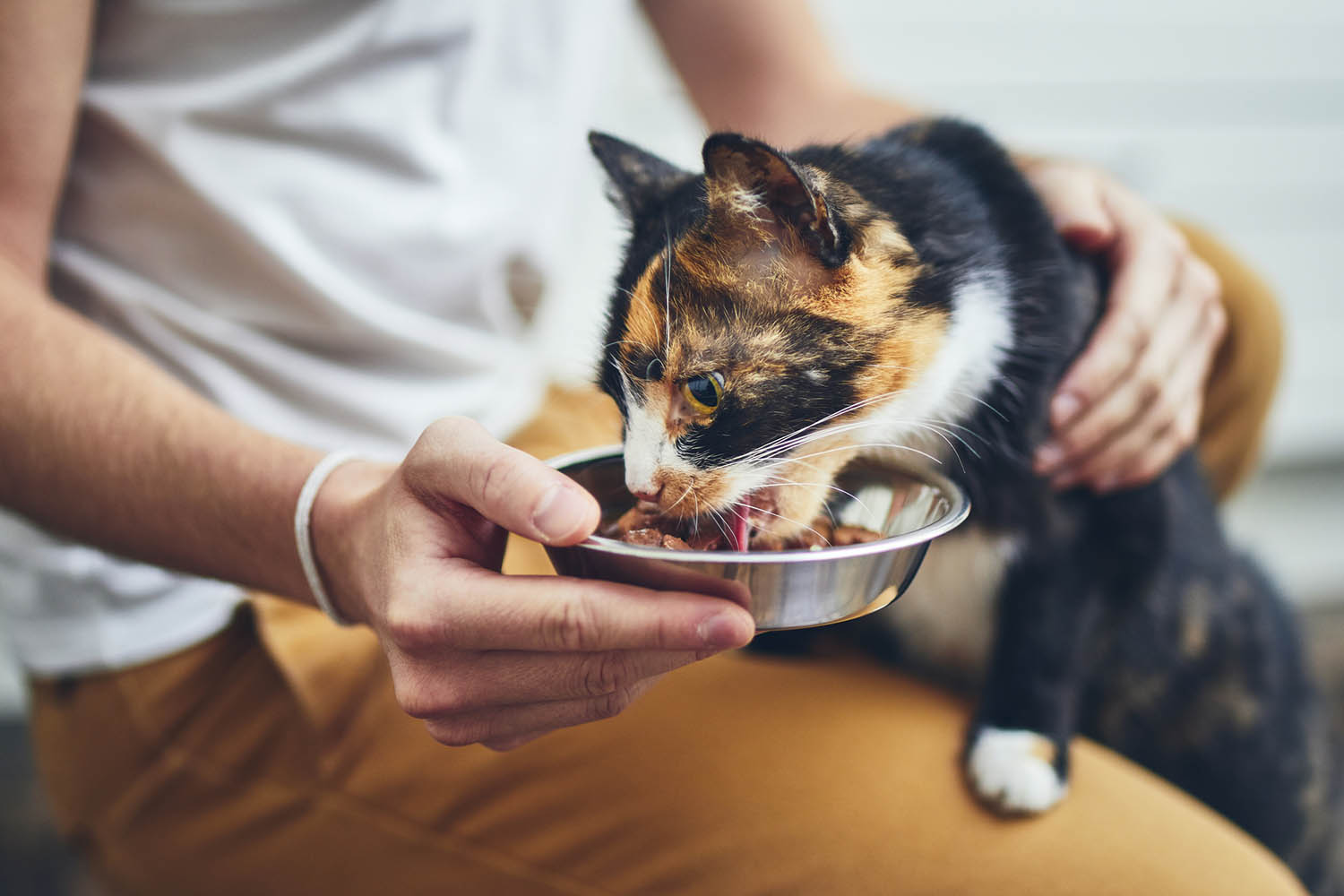Pet lovers have an array of options when selecting food for their dog or cat. A 2020 study found that there are more than 500 ingredients that are used in pet food recipes, including more than 8.5 million tons of animal- and plant-based products. When formulating a dog or cat food product from the ingredients available, pet food makers will consider a range of different needs that must be reflected in that food, such as:
- Does the recipe provide the more than 40 essential nutrients that pets require for sole source nutrition?
- Is the food tasty and appealing to pets, therefore ensuring the dog or cat eats the food?
- How well does the formula and finished product hold its shape and appearance through the cooking process?
- Does the food meet other preferences and quality expectations of the human shopper?
- Does the food meet a certain price point?
As pet food makers consider these and other important factors, learn more below about some common ingredients included in pet food recipes and understand what function they play.
Why Are Different Ingredients Used in Pet Food?
Most commercially prepared pet foods are “complete and balanced,” meaning that each serving meets a pet’s total nutritional needs and provides essential nutrients at the proper levels. These essential nutrients include vitamins, minerals, essential fatty acids and amino acids, all of which are found in the ingredients used in pet food recipes.
Each ingredient included in a pet food recipe and listed on the label is carefully selected by pet food makers to serve a specific function for the pet. Aside from providing essential nutrients, these functions could include tastiness, texture, digestibility and the ability to hold shape. All of these contribute to your pet’s desire to eat the food or palatability. A pet must be willing to eat complete and balanced dog or cat food to ensure the proper nutrition is delivered.
Although pet food ingredients go through safety checks and are subject to the same regulatory requirements as the finished pet food, some aspects of this may be misunderstood by shoppers. The truth is that every ingredient in a pet food recipe helps to deliver important nutrient requirements and is regulated for safety.
Explaining Ingredients That May be Used in Pet Food
Added Vitamins and Minerals
Dogs and cats require more than 40 essential nutrients to help support their growth, development and body systems. Included within these nutrients are a range of essential vitamins and minerals.
It’s important that cats and dogs receive the appropriate amounts of these vitamins and minerals in their diet. Although these nutrients may be found naturally in pet food ingredients, they are also added in supplemental forms to a pet food recipe to ensure cats and dogs are provided the proper ratios for complete and balanced nutrition.
Pet food makers add vitamins and minerals to food through a “premix,” or a blend of carefully measured nutritional supplements that is complementary to the vitamins and minerals provided through ingredients. This is added in small amounts to the overall pet food recipe, but it can account for close to half of the ingredients listed on the pet food label.
Animal By-products
The Association of American Feed Control Officials (AAFCO) describes by-products as, “secondary products produced in addition to the principal product.” In pet food, this commonly refers to ingredients produced during the processing of food for human consumption, including both plant and animal products.
What many people don’t know is that by-products can be excellent sources of nutrition for cats and dogs. Animal by-products, such as organ meat, are typically the first part of prey consumed by animals in the wild because it offers the most densely packed and wide-ranging nutrients. While these parts of the animal may be considered unsavory to our senses as Americans, they may also be considered delicacies in other cultures around the world.
Some by-products may also be turned into a meal based on a process called rendering. In rendering, the plant or animal ingredient is cooked at a high temperature to ensure the destruction of any pathogens such as salmonella or E. coli, while still providing the amino acids, vitamins, minerals and carbohydrates that support pet health. By using rendered ingredients, pet food makers can be confident that the ingredients are safe and still provide essential nutrition. The rendering process can also help conserve water, which can be captured via condensation during rendering and used for other purposes such as irrigation.
Flavors, Colors or Preservatives
Added flavors, colors, and preservatives are sometimes found in cat and dog food recipes in small amounts, and, like all ingredients, are strictly regulated.
Preservatives, which can come from a natural source like vitamin E, or from an artificial source, are added to recipes to prevent pet food from spoiling. This means that an opened bag of food can still be safe for pets to eat and enjoy, and provides added convenience for the pet owner. Small amounts of safe food coloring can also come from either an artificial or a natural source and may be added to a pet food recipe to satisfy pet owners’ preference.
With the exception of artificial “smokey” or bacon flavors, pet food rarely includes artificial flavors. If flavors are added, pet food makers will typically include a nutrient-dense rendered meal that pets find delicious, or they will add highly desirable animal fats or oils to the finished food product.
Artificial flavors, colors or preservatives are defined by regulatory bodies and go through a rigorous review process. Ingredients can be deemed appropriate for use in many ways. Those that aren’t considered common or usual can be recognized for use at the state level after being defined by the Association of American Feed Control Officials (AAFCO), or by the U.S. Food & Drug Administration through the Generally Recognized as Safe (GRAS) or Food Additive Petition process. Click here to learn more about GRAS, the Food Additive Petition Process and AAFCO.
Providing Choices for Pet Lovers
There is a function or role for every ingredient in a pet food recipe. When selecting ingredient providers, PFI members are committed to working with trusted suppliers and taking steps such as auditing vendors, setting ingredient specifications, or requiring a certification of safety.
Pet lovers feel more confident in their pet’s food after learning why an ingredient such a rendered by-product, added vitamins or minerals, or preservative may be included. When paired with important safety steps, it means that shoppers have access to multiple food choices to help their pet enjoy a long and healthy life.



